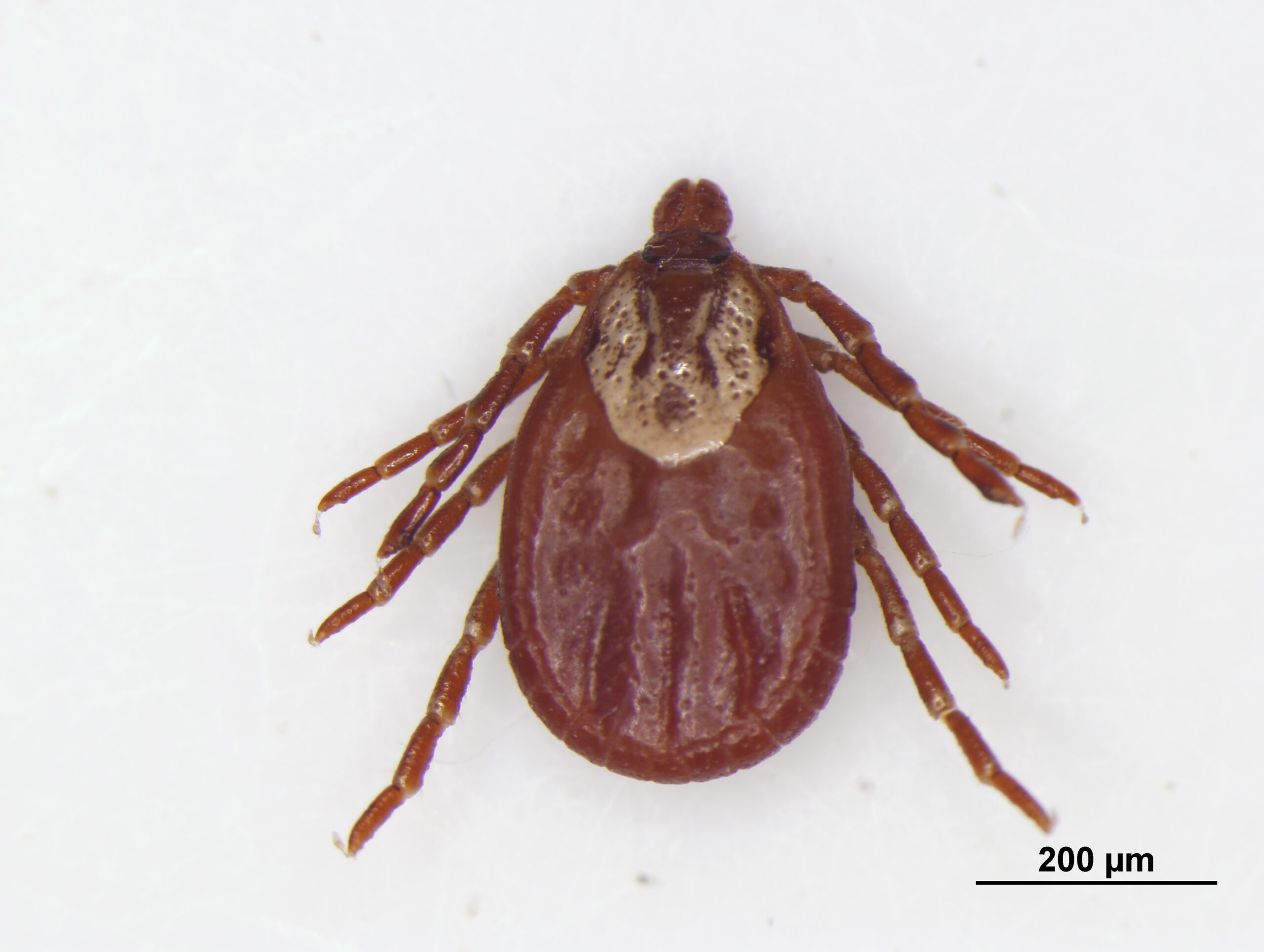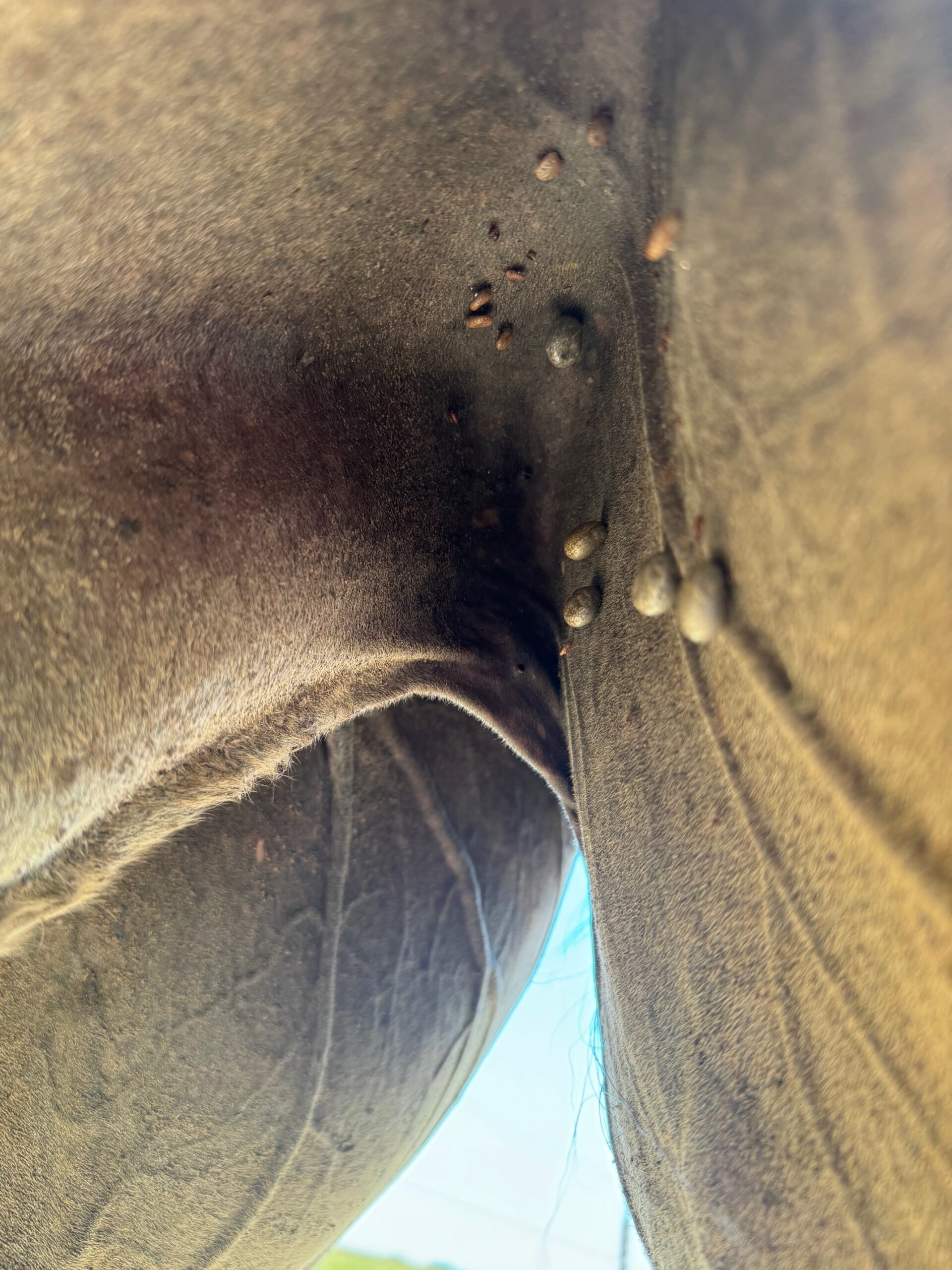Home > Horse Care > Are the ticks that target horses getting more aggressive?
Are the ticks that target horses getting more aggressive?
- October 9, 2025
- ⎯ EQUUS
Question:
I know our changing climate is extending the time ticks are active, but is it also making them more aggressive? Last year several horses on our farm had dramatic reactions to tick bites last year. The bite area would be swollen and tender for many days, and one mare developed large open sores at the site of the bites. I’ve lived here in the Midwest for decades and don’t remember this happening before. Are there any new methods for protecting horses from tick bites? We try to keep the pastures mown short, use fly spray, and check horses daily. Is there more we can do?

Answer:
You’re exactly right—peak activity time of ticks is extending, and tick ranges are expanding across North America due to a variety of factors, such as changes in climate, habitat and reservoir hosts. Overall tick burdens might be increasing in your area, leading to more tick bites and noticeable reactions. Also, new tick species might be moving into your region, which may be another reason you’re seeing more ticks on your horses.
For instance, the distribution of the Gulf Coast tick (Amblyomma maculatum) has expanded into the Midwest and Central Great Plains. The Gulf Coast tick is known as an aggressive feeder, and we often see exaggerated inflammation and wounds where these ticks feed. In the case of the mare with large, open sores, those bites may have developed a secondary bacterial infection after the tick, of any species, was removed or detached.
Methods of control
To date, no new methods for tick control on horses have become available in the United States. Chemical control methods using pyrethroids, such as permethrin, are most popular because they’re easily obtainable in fly sprays or pour-ons at local stores. At the height of tick season in your area, you may need to increase the frequency of administration. I recommend using products formulated for horses to limit potential side effects to the horse or the person administering the product.

On the lookout
Regular and thorough tick checks are of utmost importance as well. Researchers at Oklahoma State University found that some ticks prefer the darker and more moist areas on a horse, such as the belly, inguinal or perianal regions… so be sure to lift that tail! And consider fitting your horse with a fly mask that has ear covers for protection against ticks that prefer the ear canal, such as Otobius megnini.
Environment
We can also target ticks in the environment. Limiting the height of grass—and therefore the tick shelter in horse pastures—may discourage these parasites from becoming established in a field. But keep in mind that some species, such as the invasive longhorned tick (Haemaphysalis longicornis), are not bothered by short grass. Additionally, wildlife serve as tick reservoir hosts, so rehoming animals or limiting the access of deer, mice and other species to your pasture can help reduce the tick population, but that’s typically not feasible long-term.
I realize tick control on horses is frustrating, given the limited control options and expanding tick distributions, but stay diligent and connected with your veterinarian for the latest updates on tick control.
Kathryn Duncan, DVM, PhD, DACVM
Oklahoma State University
Stillwater, Oklahoma
Our expert

Kathryn Duncan, DVM, PhD, DACVM, is an Assistant Professor at Oklahoma State University’s College of Veterinary Medicine and a Co-Director of the National Center for Veterinary Parasitology (ncvetp.org). She teaches parasitology to veterinary students and conducts research on ticks and vector-borne diseases.
Don’t miss out! The free weekly EQUUS newsletter delivers practical and interesting horse health information right to your in basket! If you’re not already receiving the EQUUS newsletter, click here to sign up. It’s *free*!





